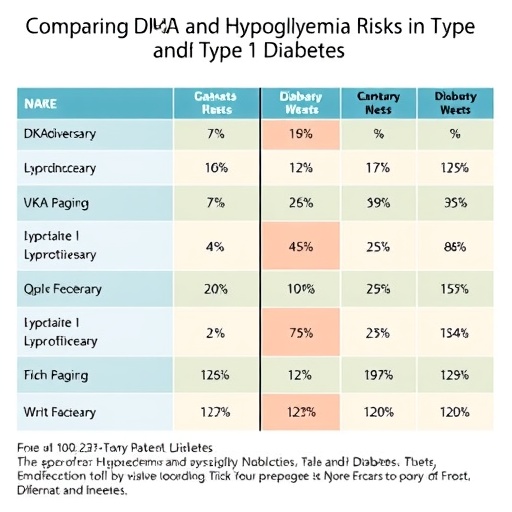In an era where sustainability is at the forefront of global innovation, radiative cooling emerges as a groundbreaking technique designed to harness the natural cooling capabilities of the environment. This method, often overshadowed by conventional cooling techniques, offers a compelling alternative that is not only energy-efficient but also environmentally friendly. By allowing materials to dissipate heat through infrared radiation, radiative cooling presents a myriad of applications, spanning from textiles to paints and even building materials. Nonetheless, a considerable challenge arises from the inconsistent methodologies used to evaluate the performance of various radiative cooling materials. This has led to a dire need for standardized protocols that can enable clearer comparisons and assessments.
To address this gap, researchers have developed comprehensive testing procedures meant to analyze both the optical and thermal properties of radiative cooling materials, the specific methodologies of which can be adapted for a variety of formats. The first step in this systematic evaluation is to collect hemispherical reflectance and transmittance spectra using advanced equipment. Two integrating sphere spectrometers are employed to capture the solar spectrum, ranging from 0.3 to 2.5 μm, and the infrared spectrum, from 2.5 to 20 μm. This dual-spectrum analysis is accomplished within a span of two hours, laying the groundwork for a more nuanced understanding of how various materials interact with different wavelengths of light.
Following the spectral analysis, attention is shifted to evaluating the materials’ real-world performance. An outdoor performance-testing platform is meticulously designed to monitor temperature variations that arise when materials with distinct radiative cooling capabilities are deployed. Throughout this assessment, thermal insulation and radiation shielding become vital components to ensure accurate readings. Moreover, the setup takes into account various environmental variables, such as humidity, sunlight intensity, wind velocity, and external temperature, all of which play critical roles in the effectiveness of the radiative cooling strategies employed.
While outdoor testing presents a comprehensive approach to understanding these materials, challenges exist in fully replicating the myriad of factors found in uncontrolled environments. This prompted the development of a compact, indoor testing platform, which, although more limited, still serves as a crucial reference point in assessing the performance of radiative cooling materials. By simulating conditions that mimic real-world scenarios, the indoor mechanism facilitates controlled experiments to yield consistent and reproducible results.
An additional layer of sophistication comes into play with the incorporation of a Proportional-Integral-Derivative (PID) temperature control system. This advanced technology allows researchers to manipulate thermal environments more intricately, thereby simulating various application scenarios encountered in actual use cases with higher fidelity. The outdoor evaluations typically extend over a full week, while the indoor assessments can be concluded in just one day, giving researchers immediate access to data that can influence future material development.
Given the complexity of radiative cooling systems, rapid theoretical performance evaluations emerge as a necessity. To this end, a simple MATLAB-based code has been proposed that allows users to engage in swift analytical assessments. Within a mere ten minutes, researchers can glean crucial information regarding the potential effectiveness of new materials, thus accelerating the overall development process.
The importance of standardizing the evaluation of radiative cooling materials cannot be overstated. As markets for energy-efficient technologies gain traction globally, having a dependable method to assess materials will not only enhance competition but also stimulate innovation within this sector. By making these procedures accessible, researchers can collaborate more effectively, sharing insights and advancements that could lead to revolutionary improvements in radiative cooling applications.
Moreover, the implications extend beyond just technical evaluations; there is an inherent potential for broad societal benefits. In urban areas laden with heat islands, the implementation of radiative cooling technologies can lead to significant energy savings and lower electric bills, ultimately contributing to reduced greenhouse gas emissions. The widespread adoption of such materials can transform public infrastructure into sustainable entities that work in tandem with natural processes.
As scientists delve deeper into the world of radiative cooling, the anticipation surrounding new discoveries remains palpable. Innovations are expected to emerge that do not only enhance cooling efficiency but also utilize waste heat for other beneficial purposes. By marrying technology and sustainability, the radiative cooling frontier stands poised to redefine modern architecture, energy consumption, and environmental stewardship.
Researchers stand on the brink of unlocking a vast potential with radiative cooling materials. As protocols for testing and evaluating these materials become more refined, the pathway to commercial applications will inevitably become clearer. The bright future for sustainable technological advancements, rooted in rigorous research and collaborative effort, continues to illuminate possibilities for a more energy-efficient and environmentally conscious world.
Fundamentally, the drive towards sustainable solutions including radiative cooling techniques is a crucial stride towards addressing climate change and environmental sustainability. As we invest in and explore the capabilities of these innovative materials, it becomes evident that the journey of harnessing the sun’s power for cooling applications is just beginning. With a combination of strategic research, rigorous testing, and community collaboration, a renaissance in energy efficiency driven by radiative cooling seems not only plausible but probable.
Subject of Research: Radiative cooling materials and their performance evaluation methods.
Article Title: Characterization of radiative cooling materials.
Article References:
Wang, Z., Pian, S. & Ma, Y. Characterization of radiative cooling materials. Nat Protoc (2025). https://doi.org/10.1038/s41596-025-01273-2
Image Credits: AI Generated
DOI: https://doi.org/10.1038/s41596-025-01273-2
Keywords: Radiative cooling, thermal properties, optical properties, performance evaluation, sustainable materials.
Tags: applications of radiative coolingdual-spectrum analysis methodsenergy-efficient cooling solutionshemispherical reflectance measurementinfrared radiation coolinginnovative cooling techniquesoptical properties of materialsradiative cooling materialsstandardized testing protocolssustainable building materialstextiles and paints for coolingthermal performance assessment





